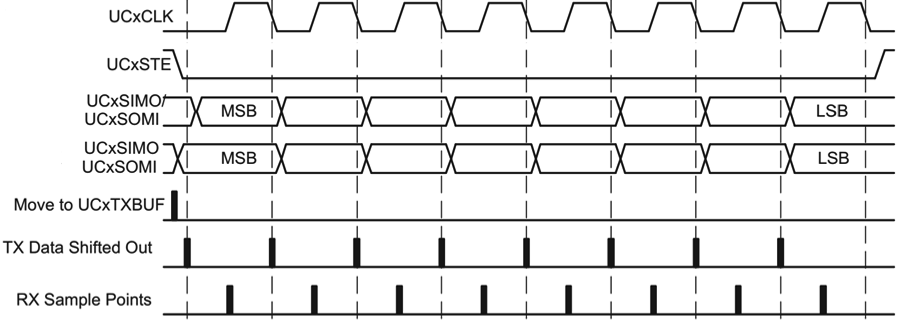SLAA721E October 2016 – March 2020 MSP430FR5969 , MSP430FR5969-SP , MSP430FR5994 , MSP430FR6989
- Trademarks
- 1Introduction
- 2Implementation
- 3Customization of MSP430FRBoot
- 4Building MSPBoot
- 5Demo Using FRAM LaunchPad Development Kit as Host
- 6Porting the target side example projects to other MSP430FR devices
- 7References
- 8Revision History
2.4.1.2 SPI
The SPI interface, used for CC110x communication, is implemented using the following configuration (also see Figure 2-7):
- 8-bit data
- MSB first
- Clock polarity = 0 (inactive state is low)
- Clock phase = 1 (data captured on first clock edge, changed on following edge)
- 3-pin configuration with STE implemented using GPIO
 Figure 2-7 SPI Format
Figure 2-7 SPI Format